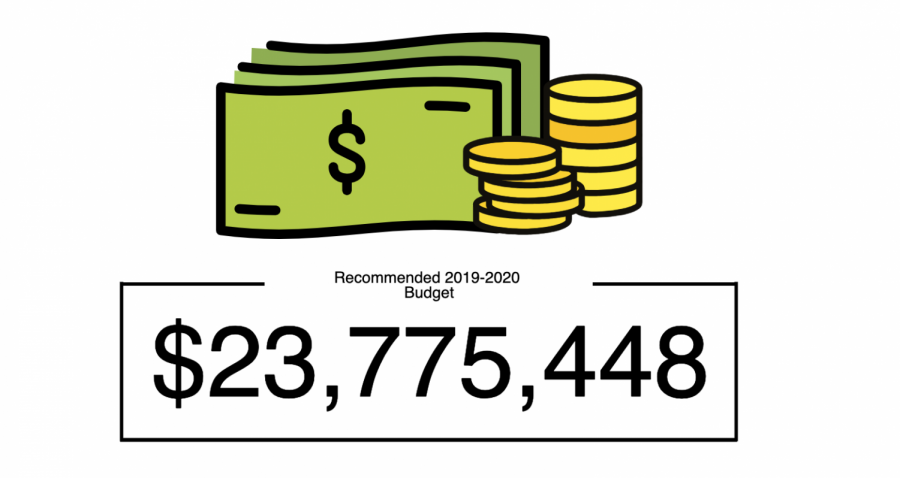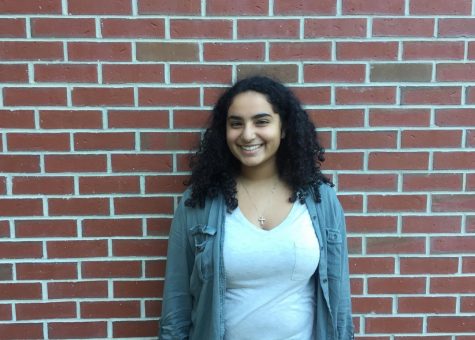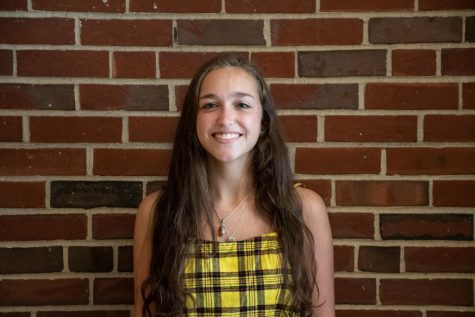School committee approves 2019-2020 FY budget
The school committee approved the budget for the 2019-2020 fiscal year at their meeting on February 27.
March 11, 2019
The school committee approved the budget for the 2019-2020 fiscal year at their meeting on February 27 in the Algonquin library, prioritizing communication, curriculum, student support services and technology.
The recommended budget is set at $23,775,448, which includes minimum local contributions from both Northborough and Southborough.
According to Superintendent Christine Johnson, the budget must also take into account student enrollment, class sizes, instructional resources, healthcare costs for staff and utilities necessary to operate the school.
“[The goal of a budget] is to be educationally sound and fiscally responsible,” Johnson said. “We’re all taxpayers, and [taxpayers] want to know that what we spend our money on is well-purposed and goes in a direction that supports growth opportunities for students and excellence in teaching and learning. That balance is very challenging.”
Part of what made this year’s budget process especially difficult was contractual increases according to Johnson. Teachers’ salaries increase each year a teacher remains at the school and as a teacher becomes more educated.
“If there are 10 teachers [get their Master’s degree] in one year, it can be as much as 50,000 dollars on the budget,” Johnson said.
To account for these increases, potential budget offsets were necessary.
According to Johnson, Full Time Equivalency (FTE) is “a way to define how many teachers you have in your building.” A teacher with a full teaching load, which is five courses, would be defined as a 1.0 FTE. For example, a 0.4 FTE reduction would mean that a teacher would have two less courses per semester.
As of now, recommended offsets include a 1.0 FTE reduction in world language, a 0.8 FTE reduction in health and physical education, a 0.4 FTE reduction in fine and applied arts and a 1.0 FTE reduction in administration.
“One of [the FTE reductions] is a new [part-time 0.6] hire and one of [the teachers] will be leaving the district anyway, so what that allowed us to do is to say ‘Okay, if we have to reduce staff, we’re not reducing staff that are currently here; we’re reducing the position,’” Johnson said. “So in health and physical education, it was a 0.8, which was not a full time teacher, and in art, we’re hiring a 0.6 instead of a 1.0, so that helped us reduce the operational budget.”
Johnson feels that certain parts of the budget conversation have been challenging. An estimated $25,000 was allocated towards funding the high school’s phone system, which Johnson says could have been used to put one of the 0.4 teaching positions back.
“You have to maintain a balance of all of those line items and be able to support the school,” Johnson said. “You can’t shut the lights off, but the electricity could have paid for a teacher and a half. We have to have phone systems…I know that the most important part of the educational experience is the relationship, and the experience you have in some of the programs that we offer, and the teachers who teach your classes, but you still need to support the infrastructure.”
While the recommended budget of $23,775,448 will not change, the composition of the budget is subject to change. If any money is leftover in savings, the principal will prioritize what gets put back into the budget.
“A lot of things happen after we vote on the budget,” Johnson said. “One year we had enough savings that we were able to put that third assistant principal back. Another time we had reduced some department by a 0.2, which is basically one full year class, and we were able to put a person back in.”
Principal Dr. Sara Pragluski Walsh says that staffing could be changed according to class sizes based on class enrollments. Another priority of hers is meeting student needs outside of the classroom.
According to Johnson, the district is fortunate to experience consistent and realistic increases in the budget each year. The FY 2020 budget increased 3.0 percent compared to the FY 2019 budget.
“To hold [the budget] at a three percent increase, considering the contractual obligations for the employees, the special ed increases, rising costs… It has been a very successful process,” school committee member Paul Bukta said.












